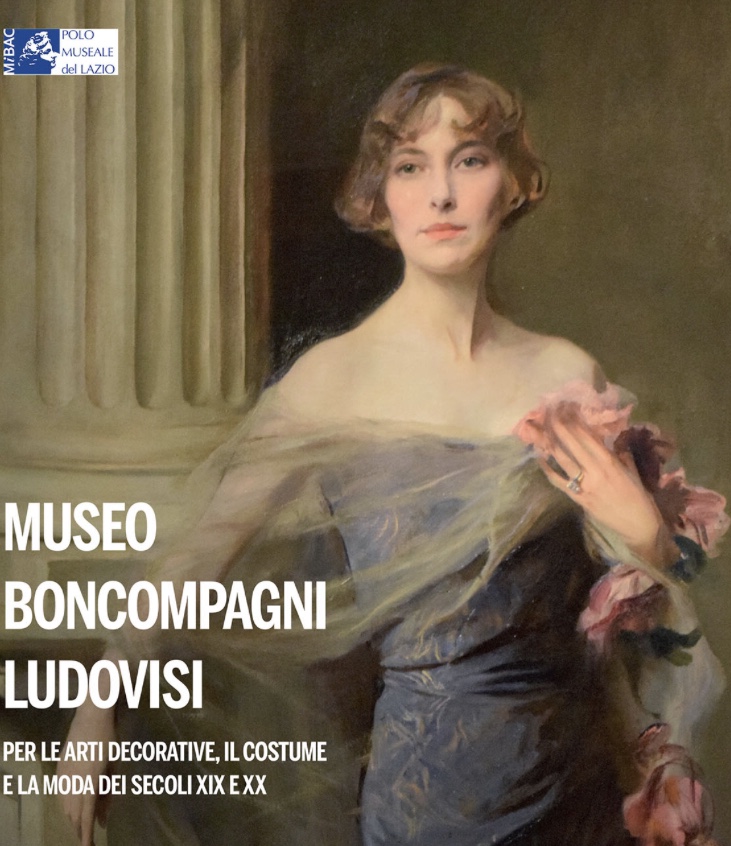
IL GIOIELLO NELLA MODA E NELL’ARTE, JOSEPH PACE
THE JEWEL IN FASHION AND ART, JOSEPH PACE
BONCOMPAGNI LUDOVISI MUSEUM OF DECORATIVE ARTS AND FASHION
DIRECTION OF THE STATE MUSEUMS OF ROME – MINISTRY OF THE CULTURAL AFFAIRS
Inside the exhibition spaces of the Boncompagni Ludovisi Museum, a story of the history of fashion unfolds between clothes, jewels and painted portraits, many of which underline the close iconic link between jewelery and fashion. The theme mainly addressed in the paintings is that of the “portrait” (feminine), whose etymological, historical, literary and social meaning is accompanied by many variations from the cultural assumptions and destinations, which have supported since ancient times and over the centuries , with wide-ranging cultural functions and contents. The jewels in these paintings identify the character and personality of the portrayed character, defining their social status, as has been the tradition since ancient times.
Exemplary are the jewels and jewels on display that concretely deal with the evolution of technology and fashion: the necklaces and bracelets, even the chains of non-precious materials, in the American style that refer to the moment of protest of the Sixties, in which jewels constituted an emblem of rebellion precisely in their being unsightly. Significant is the elegant and refined use of alternative materials to gold (the bracelets of fake glass pearls and fabric and wax flowers). Finally, of rare value are the technological and executive experiments of the Seventies by Alberto Giorgi and Umberto Mastroianni, or the revival of orientalism with the pendant in the shape of a cross with amethyst.
The history of jewelery at the Museum concludes with the artist’s book by Joseph Pace, Flowers#2, 2010, (paper, cut-out cardboard, golden pigments, bijoux, gold foil), theosophical jewel, between amulet and existential symbol, concluding o better by reopening to the perspectives of modern jewelery between brand luxury and brand seriality.
Exhibition curated by Matilde Amaturo and Valentina Filamingo.
24 September to 30 November 2022
Tuesday to Sunday, 9.00 – 19.30
All’interno degli spazi espositivi del Museo Boncompagni Ludovisi si snoda un racconto di storia della moda tra abiti, gioielli e ritratti dipinti, molti dei quali sottolineano lo stretto legame iconico tra gioiello e moda. Il tema prevalentemente affrontato nei dipinti è quello del “ritratto” (al femminile), il cui significato etimologico, storico letterario e sociale, è accompagnato da molte variazioni dai presupposti culturali e dalle destinazioni, che hanno sostenuto fin dall’antichità e lungo i secoli, dalle funzioni e dai contenuti di ampio respiro culturale. I gioielli in questi dipinti identificano il carattere e la personalità del personaggio ritratto, definendone lo stato sociale, come è tradizione fin dall’antichità.
Esemplari sono i gioielli e i monili esposti che concretamente trattano l’evoluzione della tecnica e della moda: i collier e i bracciali, anche le catene di materiale non pregiato, di stile americano che rimandano al momento di protesta degli anni Sessanta, in cui i gioielli costituivano un emblema di ribellione proprio nel loro essere antiestetici. Significativo è l’uso elegante e raffinato di materiali alternativi all’oro (i bracciali di finte perle in vetro e fiori di stoffa e cera). Infine di raro pregio sono le sperimentazioni tecnologiche ed esecutive anni Settanta di Alberto Giorgi e Umberto Mastroianni, o ancora il revival dell’orientalismo con il pendente a forma di croce con ametista.
La storia del gioiello al Museo si conclude con il Libro d’artista di Joseph Pace, Flowers#2, 2010, (carta, cartone ritagliati, pigmenti dorato, bijoux, lamina dorata), gioiello teosofico, tra amuleto e simbolo esistenziale, concludendo o meglio riaprendo alle prospettive dei gioielli moderni tra lusso dei brand e serialità di marca.
Il percorso museale è curato da Matilde Amaturo con Valentina Filamingo.
Durata: 24 settembre – 30 ottobre 2022
